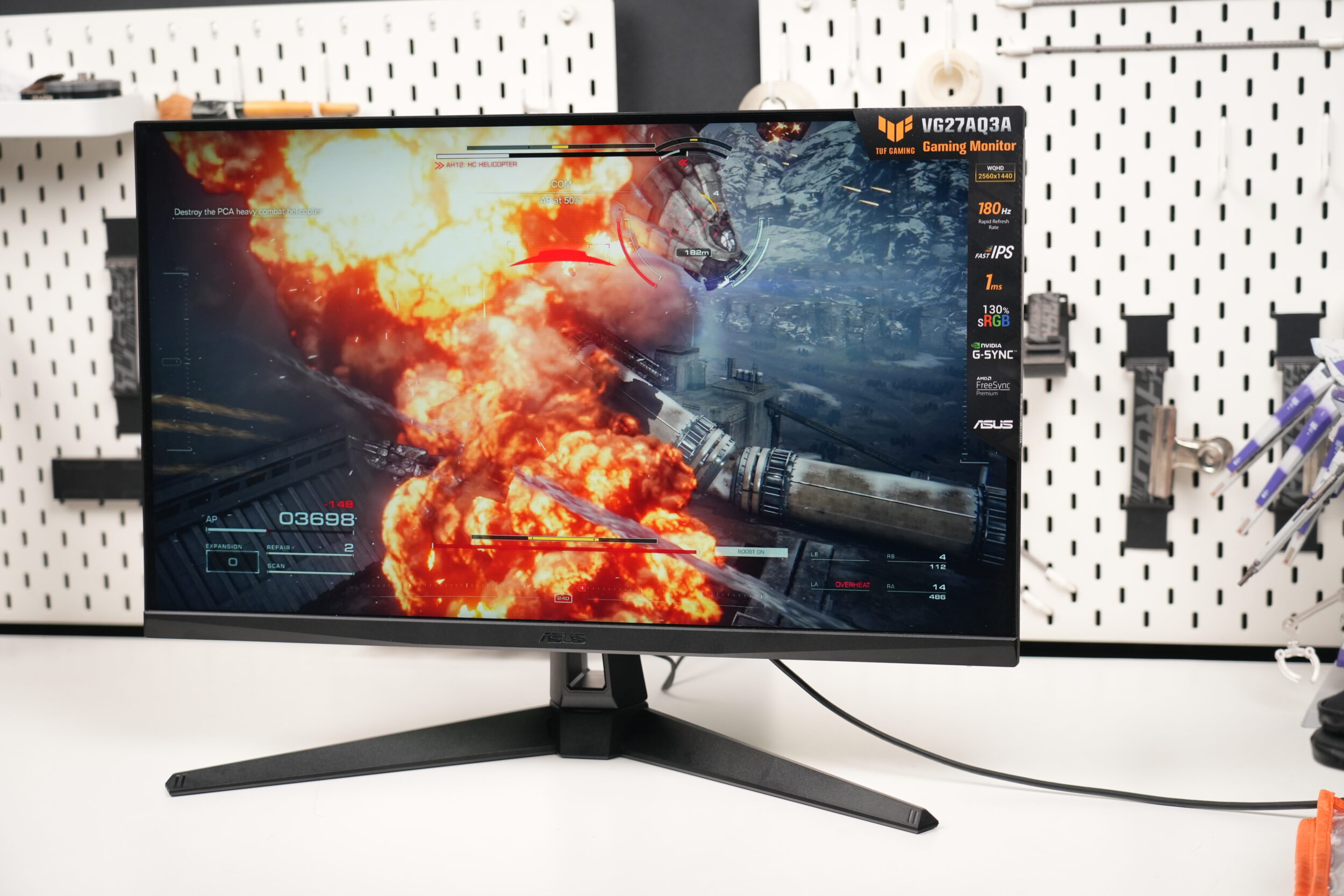With the holiday season upon us, a lot of you are probably readying to get some new parts or upgrade for your gaming rig and I know some of you guys are grabbing a new monitor. But the market’s pretty saturated right now with many 1080p and QHD screens for gamers available but one thing that I’ve been asked a lot is the current crop of mainstream 180hz monitors and how they fare versus their factory overclocked counterparts from last year or so.
But so you don’t accuse of me clickbait, in most cases you’re fine with either option. Whether you buy new or an older model, if the box says its 180hz then it most certainly is 180hz and yes, you do have your warranty.
Still, are newer models better? We’ll talk about that in more detail in this article. Read on to find out more.
Refresh Rate and How it Affects the Panel
A monitor’s refresh rate is how fast a display draws images on-screen per second. If you’re reading this right now on a 60hz monitor, then your screen right now is refreshing 60 times every second. Modern monitors will usually have refresh rates higher than 100hz and if you set your machine to your highest display rate, the result will be a smoother visual experience.
Higher refresh rates typically benefit fast-paced games most specifically first-person shooters. Many esports professionals swear by the highest refresh rate panels they can get and push their systems to the max to support these fast refresh rates by lowering detail quality in-game.
While bleeding-edge monitors can go as high as 540hz today, a mainstream gaming monitor will usually start at 144hz. It’s a smoother experience than 60hz and even just mousing around on your desktop seems relaxing to the eyes.
And sadly, if you have a screen rated for 144hz then that’s that. The same for 120hz or 240hz, in most cases, you can’t go higher than what you’re screen is rated to do. Or can you? Overclocking could help.
Overclocking and How it Affects your Monitor?
Just like anything running on “clocks” like your CPU and GPU, a monitor is also pretty much the same but while a CPU and GPU can get mild overclocks in megahertz, your monitor may only be able to stretch a few Mhz.
Back in the old CRT days, I had a tiny 15” screen that I managed to push to 85hz. After jumping to LCD, I thought I could the same but my brand-spanking new 23” LCD screen from 2006 could only manage a refresh rate overclock of 75hz.
So I kept pushing. And pushing. And I just gave up. Pushing past 76Hz just gave me garbage and the screen was unsable. But over time I noticed my overclock was getting smaller and 3 or so years later, I just stayed at 60hz to avoid random flickering.
But to put it simply: overclocking is simply the practice of running your device past its rated speed. Devices like the CPU, GPU and RAM are the most common examples of PC components that can be overclocked but monitors are also known to have a certain degree of overclockability.
We actually covered this more than a decade ago with our most recent guide dating back to 2015 with techniques discussed are still relevant today. You can read on about that here: https://www.back2gaming.com/guides/lcd-monitor-overclocking-guide/
The closing of that article says this:
“Back2Gaming will not be held liable for any damages you may incur by overclocking your monitor. Do this at your own risk. Overclocking any devices will potentially lower their lifespan and may cause internal damage to hardware.”
And this is where I’d like to get started with our actual discussion on native refresh rate displays versus factory OC’d models. So let’s talk about the most obvious concern: lifespan.
Monitor Lifespan
Overclocking has always been attributed to breaking warranties but to put a lot of you at ease, in the context of this article, we’re talking about factory overclocked displays. These are the displays that are priced lower than they should but perform way above their weight-class.
Just a few weeks ago, ASUS sent us their VG3 series monitor a native 180hz display available in the following configurations:
- TUF Gaming VG27AQ3A (27-inch, 1440p, 180hz, 130% sRGB)
- TUF Gaming VG279Q3A (27-inch, 1080p, 180hz, 99% sRGB)
- TUF Gaming VG249Q3A (24-inch, 1080p, 180hz, 99% sRGB)
Many of your initial questions was if this monitor was better than the VG1 series of TUF Gaming monitors. As someone who uses the VG27AQL1A, its been running at 170hz since day 1 at 80% brightness and I’ve yet to have any issues with it. Yes, it is an overclocked 144hz panel running at 170hz. Regardless, I’m highly confident ASUS will honor the warranty as the factory OC is under their own rating and they have stringent testing to ensure that those OC’d monitors live up to the rating on the tin.
Still, with the release of the TUF GAMING VG3A series with a native 180hz panel, my monitor suddenly felt like its starting to age. Of course, that’s just me thinking 180hz > 170hz but at the end of the day, my screen’s still kicking. And while my sample size is really low, I can attest I’ve had cases of OC’d screens currently waiting RMA right now due to what I assume is the factory OC showing its ugly side.
And the most common cause of that is heat.
Panel Temperature
Overclocking tends to push components past their limits and that usually results in higher temperatures. Whether it’s the CPU, GPU or a monitor, it is an inherent trait of going faster.
To show you a visual test, here’s a thermal shot of a monitor running native max frequency at 80% brightness:
And here’s the same panel at its overclocked refresh rate at 80% brightness:
Now those were only at 15-minute runtime from an absolute cold start and then burned-in with a white screen and we register an almost 5*C difference on the hottest side with the center of the screen registering at ~2*C gap.
If you’re in a hot room with poor ventilation, you might want to consider going for a native refresh rate display as the potential risk of heat-soaking your display could not only cause your panel to go wonky, your monitor may just suddenly shut off randomly on you due to overheating.
Newer Tech
The last consideration you should think about is features. We see advancements in gaming technology every year and sometimes, an older panel may have just missed out on nice tech that’s available on its newer brother.
This includes newer sync technology releasing as the same year as the new screen along with a new GPU but also potentially better, sharper colors as well as overall display quality.
Final Thoughts
As I said at the start of this article, this is not discourage you from buying factory overclocked monitors. If you find it on-sale, and your strapped for cash then by all means treat yourself. But if have the option, native refresh rate monitors do have their benefits and it goes just beyond being simply faster, they’re pretty much to for their rated spec so there’s no risk of higher heat which may lead to shorter panel lifespan or weird colors.
For your consideration, check out the ASUS TUF GAMING VG3A monitor series of 180hz native refresh rate monitors, available now at authorized ASUS dealers as well as Lazada and Shopee.






